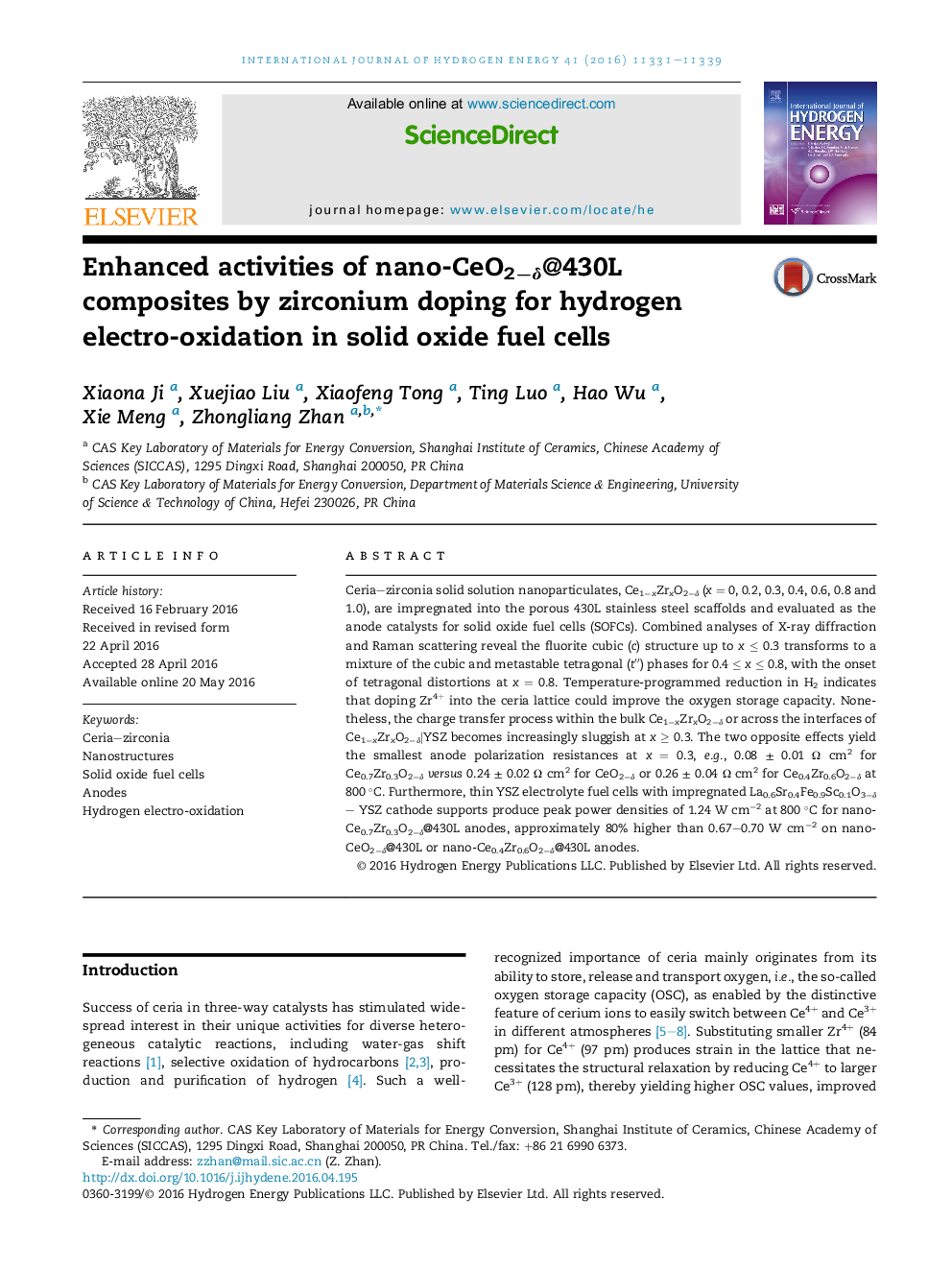| کد مقاله | کد نشریه | سال انتشار | مقاله انگلیسی | نسخه تمام متن |
|---|---|---|---|---|
| 1269565 | 1497399 | 2016 | 9 صفحه PDF | دانلود رایگان |

• New SOFC anodes are fabricated by impregnating Ce1−xZrxO2−δ catalysts into 430L scaffolds.
• Nano-Ce0.7Zr0.3O2−δ@430L anodes show the highest activity for hydrogen oxidation.
• Nano-Ce0.7Zr0.3O2−δ@430L anode fuel cells yield power densities of 1.24 W cm−2 at 800 °C.
Ceria–zirconia solid solution nanoparticulates, Ce1−xZrxO2−δ (x = 0, 0.2, 0.3, 0.4, 0.6, 0.8 and 1.0), are impregnated into the porous 430L stainless steel scaffolds and evaluated as the anode catalysts for solid oxide fuel cells (SOFCs). Combined analyses of X-ray diffraction and Raman scattering reveal the fluorite cubic (c) structure up to x ≤ 0.3 transforms to a mixture of the cubic and metastable tetragonal (t″) phases for 0.4 ≤ x ≤ 0.8, with the onset of tetragonal distortions at x = 0.8. Temperature-programmed reduction in H2 indicates that doping Zr4+ into the ceria lattice could improve the oxygen storage capacity. Nonetheless, the charge transfer process within the bulk Ce1−xZrxO2−δ or across the interfaces of Ce1−xZrxO2−δ|YSZ becomes increasingly sluggish at x ≥ 0.3. The two opposite effects yield the smallest anode polarization resistances at x = 0.3, e.g., 0.08 ± 0.01 Ω cm2 for Ce0.7Zr0.3O2−δversus 0.24 ± 0.02 Ω cm2 for CeO2−δ or 0.26 ± 0.04 Ω cm2 for Ce0.4Zr0.6O2−δ at 800 °C. Furthermore, thin YSZ electrolyte fuel cells with impregnated La0.6Sr0.4Fe0.9Sc0.1O3−δ – YSZ cathode supports produce peak power densities of 1.24 W cm−2 at 800 °C for nano-Ce0.7Zr0.3O2−δ@430L anodes, approximately 80% higher than 0.67–0.70 W cm−2 on nano-CeO2−δ@430L or nano-Ce0.4Zr0.6O2−δ@430L anodes.
Journal: International Journal of Hydrogen Energy - Volume 41, Issue 26, 13 July 2016, Pages 11331–11339